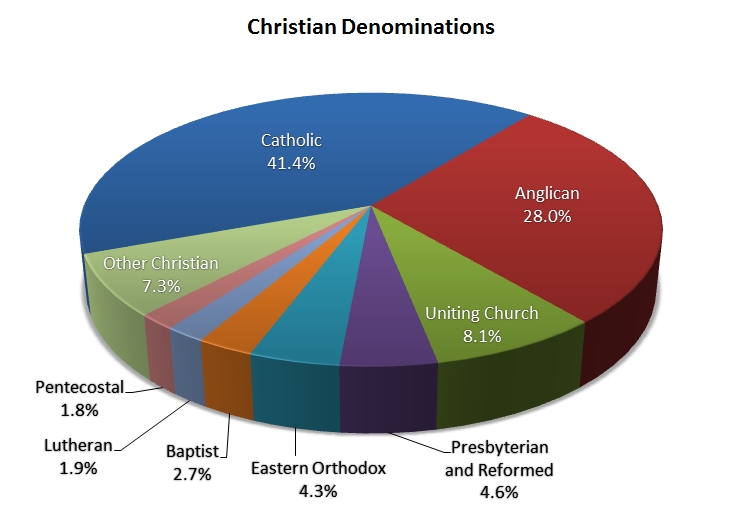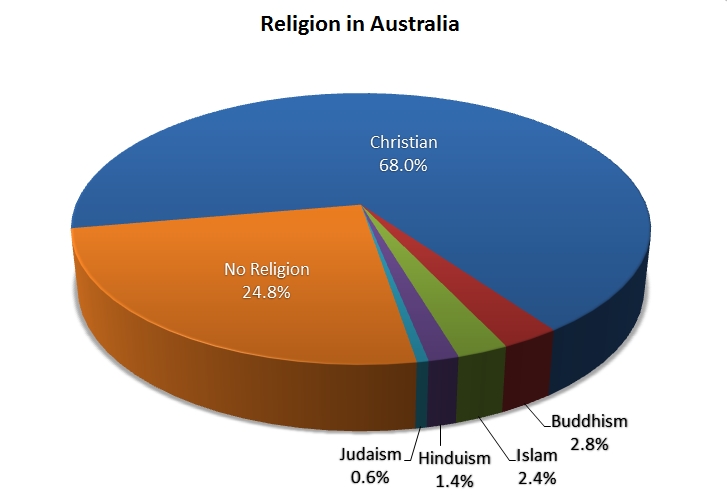Data from the 2011 Australian national census has been released by the Australian Bureau of Statistics. There are many who may find the data on religious affiliation useful. In this series, I’ll be attempting to outline the basic data as well as doing some minor analysis and drawing some conclusions.
The data
First, the census outlines the major religions represented in Australia.
Additionally, the Christian religion is broken down into denominational affiliation.

Analysis and conclusions
Several points are immediately apparent looking at this data.
- Nominal Christianity remains the dominant religion in Australia.
- Within Christianity, the medieval stream of the church—the Roman Catholic Church and the Anglican Church—remain the dominant affiliations.
- Besides Christianity, the dominant affiliation in Australia is non-religious. This would include agnostics and atheists as well as those who, for one reason or another, maintain no religious affiliation.
Several additional points are worth noting.
- While 75.2% of Australians report some sort of religious affiliation, only 8% attend religious services at least once a month (McCrindle Research, 2013).
- Only roughly 32% of Australian do not consider themselves Christian. This suggests that efforts to evangelise nominal Christians by instruction in the teachings of Christianity might be fruitful.
- A revival of evangelical fervour within Australian Christianity has the potential to reach a broad proportion of the Australian population who consider themselves at some level affiliated with these denominations.
There is much more to be learned by comparing the 2011 census to previous data to learn about the trends. This will be the goal of my next post.
Grace to you.
About Jason Harris
One Comment
Comments are closed.



I found it interesting that 8% go to church at least once a month. When we first moved to Australia in 1994, the stats were less than 1% go to any church!